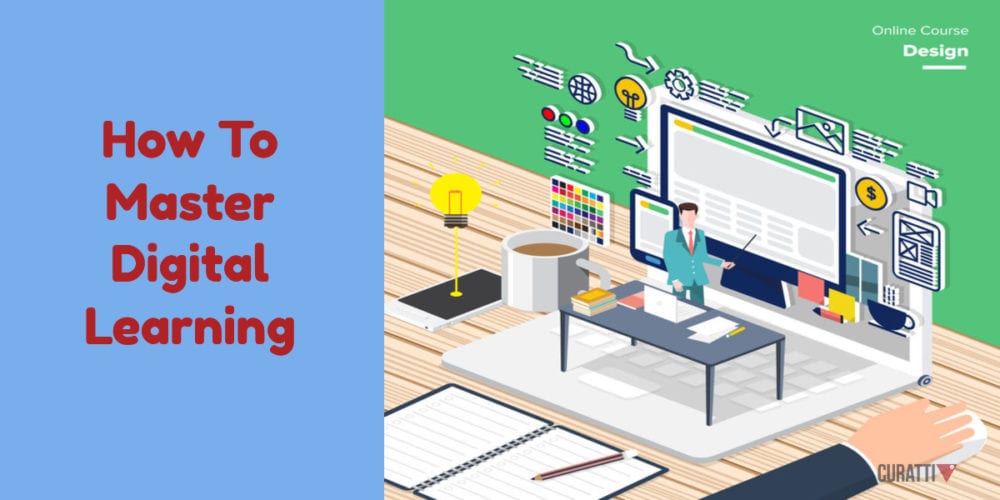7 Tips For Successful Digital Learning

New technologies have disrupted numerous ways we do things.
The same applies to how we learn and acquire new skills. It’s no longer necessary to take up classes at your local college. Instead, you can opt for online courses.
This allows you to learn at your own pace or pick the lecturers you want – even if they don’t live in your city, country, or even on the same continent.
Let’s see how you can make the most of your digital learning efforts.
1. Set Your Goals
The very first step for successful digital learning is setting your education goals.
You need to know what you want to get out of the course and what kind of results you expect. You might want to master a new skill or improve your competence in the area of your choice. Or maybe just get some basic understanding of a particular subject.
This will help you choose the right course to commit yourself too, and determine the level of your devotion to the course.
2. Research and Choose Well
Your digital learning success will largely depend on your satisfaction with your course choice. Before you enroll, make sure you’ve researched the offer thoroughly, in order to find a program that meets your interests and can help you achieve your goals.
If you’re trying to find a degree course, you should also research some other important factors as well, These include:
- Tuition
- Potential financial aid
- Access to e-books
- Professor-student interaction, etc.
If you do this part diligently, you’re more likely to avoid buyer’s remorse. A study shows that 59% of students would change the way they searched for an online course if they had to do it all over again.
3. Schedule Time for Learning
Even though online learning may seem much easier at first glance, it requires the same and sometimes an even higher level of commitment. The odds are higher you’ll be more successful if you make a schedule for learning and stick to it.
Choose the hours when you’re most productive, and reserve a 3- to 4-hour timeslot for your learning sessions. Treat it the same way you would treat your job obligations. Make it a priority. Don’t schedule any appointments or other tasks during those hours.
You will need time to read books, take lessons and do some homework.
4. Create Your Learning Space
To get the best results, you need an adequate place to work. It doesn’t have to be an entirely dedicated study, but rather a spot in your living space that is comfortable and quiet enough so that you can fully immerse in your tasks.
There are several things you need to take into consideration when creating your learning space:
- Ambiance. Find out what kind of environment suits you best for this purpose. Some people can only learn in silence, while others prefer music. Try out different modes in order to figure it out.
- Ergonomics. No matter how comfortable your bed or sitting on your floor may seem for learning, you need to think about ergonomics. Spending long bouts of time in these positions will leave you with the aches in your shoulders or a stiff neck. Your back may suffer too. Think about purchasing an ergonomic chair, and don’t let pain distract you from your task.
- Lighting. For the best results, you’ll need a well-lit space. This will keep you focused and protect your vision while you’re on working on your laptop.
- Supplies. Have some snacks and drinks around, as you don’t want to lose time getting them when you’ve just begun studying.
- Eliminate distractions. Keep your mobile silent. Turn off your Facebook and any apps that show on-screen banner notifications. Almost everything can wait awhile. If you’re living with someone, let them know that you’re learning and ask them not to disturb you.
You may also want to read: The Challenges Of Working and Learning From Home [Interactive Q&A]
5. Find a Friend to Learn With
Sometimes, it’s hard to get yourself going or find enough motivation to continue.
That’s when help from a friend can be beneficial, especially when it’s someone who is trying to achieve the same or similar goals.
If there is an opportunity for this, organize learning sessions with a friend, and support each other through the process.
Having a coach to help you navigate this process is also beneficial, as they will be able to monitor your progress and offer you guidance.
6. Use Time Management Techniques
Time management techniques can make you more efficient when learning.
For example, Pomodoro can help you improve your focus and improve your productivity.
You split your time into 25-minute chunks, and take a 5-minute break after you complete each of them. After finishing 4 tasks, take a longer, 15 to 20-minute break.
You can use the breaks to have a snack or, take a brisk walk to boost your concentration.
7. Stay Motivated
Your motivation can lose a bit of its strength as time goes by.
Overcome this by reminding yourself about your goals and the results you expect after you’ve finished with the course.
Also, it’s a good idea to properly reward yourself after you’ve successfully completed one of your tasks. Your reward may be some extra Netflix time, a piece of clothing you like, or anything that makes you tick.
Follow these 7 tips as they can help you make the most of your digital learning efforts.
Featured image: Copyright: ‘https://www.123rf.com/profile_emojoez‘ / 123RF Stock Photo
Latest posts by Michael Deane (see all)
- 7 Tips For Successful Digital Learning - March 19, 2020
- AI: Some Tips On How To Use It in Digital Marketing - January 29, 2019


